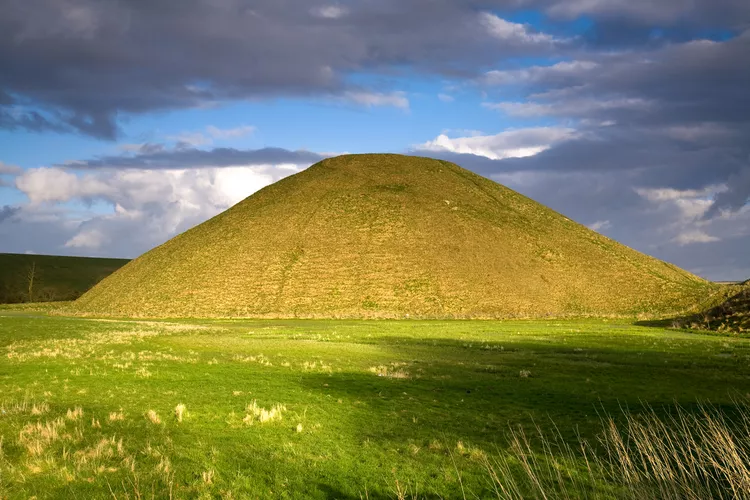Summary
Discovering Silbury Hill: A Mysterious Marvel in Wiltshire
Silbury Hill in Wiltshire is massive, enigmatic, and awe-inspiring. This gigantic mound oversees the flat Wiltshire landscape, not far from Avebury Henge. As the largest man-made mound in Europe, it compares in both size and antiquity to the pyramids of Egypt. Until recent studies, the origins and purpose of this structure remained largely uncertain. However, current theories suggest that this 130-foot-high mound, with a circumference of 1640 feet, was inadvertently created over time.
What’s Known About Silbury Hill
Despite its impressive stature and remarkable age of approximately 4,400 years, not much is known about Silbury Hill. Built around 2400 B.C., it consists of locally quarried chalk combined with various soils. Experts estimate that it required about 4 million man-hours to transport the 500,000 imperial tonnes of materials for its construction.
Furthermore, numerous ancient legends, often involving the Devil, surround Silbury Hill. For instance, one tale claims that Old Nick buried a golden statue at its center. In another story, he intended to drop earth on a local village but was enchanted to instead leave it on an empty meadow. A third legend suggests that the mound serves as the burial site for a mythical King Sil and his armored horse. While these tales add to the allure of the site, no evidence has ever been discovered to substantiate them.
Attempted Excavations
Over the years, various excavation efforts have been undertaken. In 1776, miners drilled a shaft into the center of the hill in search of a burial chamber but found nothing. Similarly, a horizontal tunnel was bored in 1849, yielding no results. A televised excavation supported by the BBC in 1968 revealed three distinct phases of construction but uncovered nothing additional.
Unfortunately, the excavations were never properly back-filled, which led to the collapse of the summit in 2000, resulting in a 45-foot-deep crater. English Heritage, the site managers, have since stabilized the hill and filled in the excavated areas with chalk. Their current research focuses on seismic investigation and limited excavation efforts, assisted by material analysis from the 1968 excavations. They concluded that the mound’s formation was likely a byproduct of various nearby activities, rather than a deliberate construction.
Things to Do at Silbury Hill
While Silbury Hill and its mysterious history are captivating, visitors may find wandering nearby more fruitful. The hill is part of the Stonehenge, Avebury, and Associated Sites UNESCO World Heritage Site.
If prehistoric wonders fascinate you, Avebury Henge, Europe’s most complex Neolithic site, is less than 2 miles away. It features a vast stone circle and an informative museum. Additionally, Marlborough, a charming market town about six miles east, offers historical allure and picturesque views.
Other Activities Nearby
Spend a delightful day antique hunting in Hungerford, located approximately 16 miles east of Silbury Hill via the A4. This town is renowned for its numerous antique shops and flea markets, making it one of the best destinations in England for antique enthusiasts. Furthermore, Marlborough College, the alma mater of the Duchess of Cambridge, hosts a mound rumored to be Merlin’s burial site.
Silbury Hill Essentials
- Where: Silbury Hill, West Kennet, Marborough, Wiltshire SN8 1QH
- When: Open every day during reasonable daylight hours.
- How Much: Visiting the site and parking in the small observation area is free.
- How to Visit: The viewing area accommodates about 15 cars with paved paths leading to a locked gate approximately 550 feet from the hill. Although the A4 road runs closer, it is a busy thoroughfare without stopping areas.
- Note: Access to the hill itself is restricted to preserve its delicate structure. Additionally, drone overflights are prohibited.





